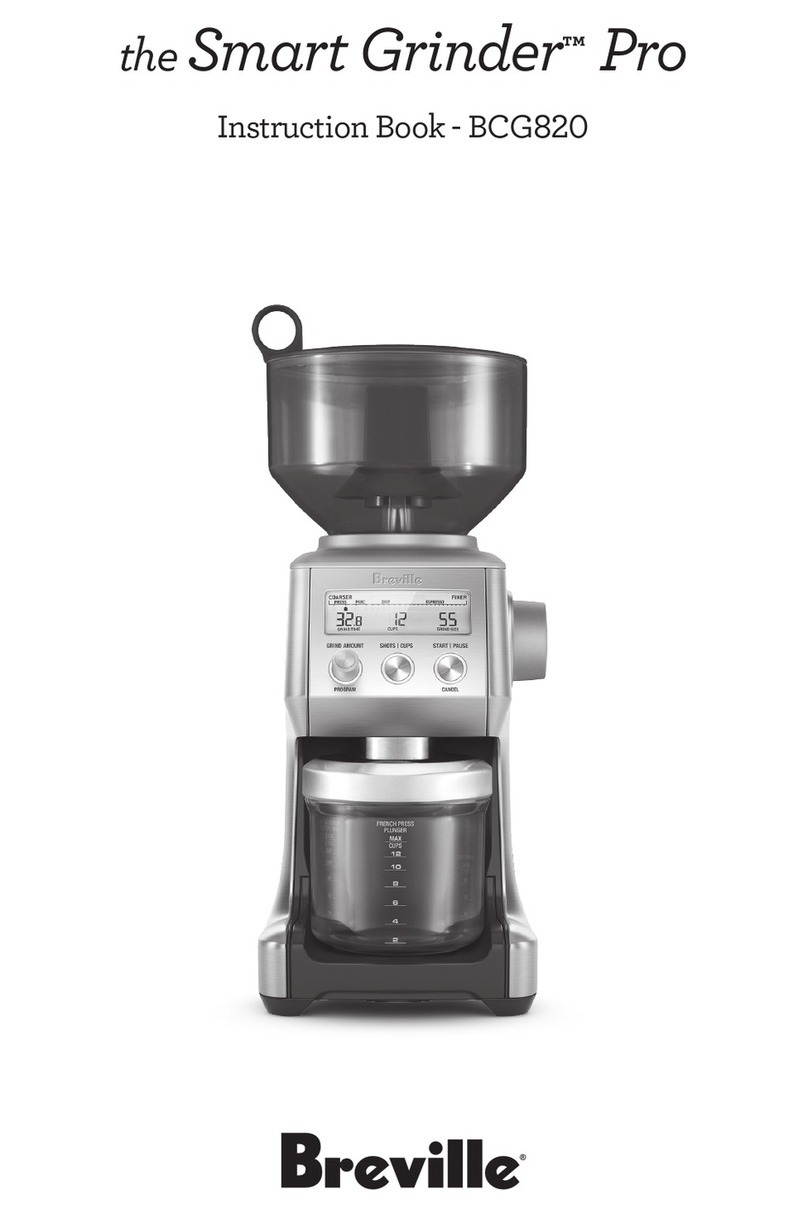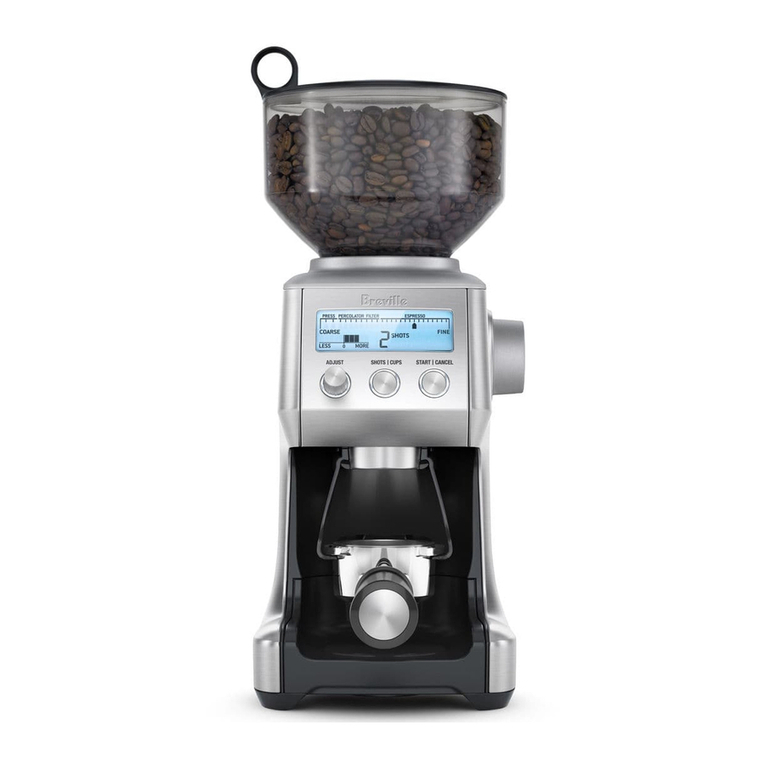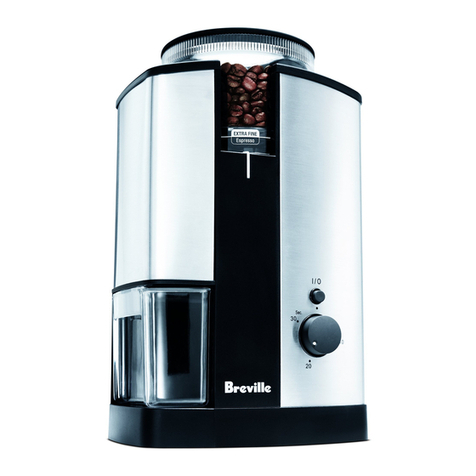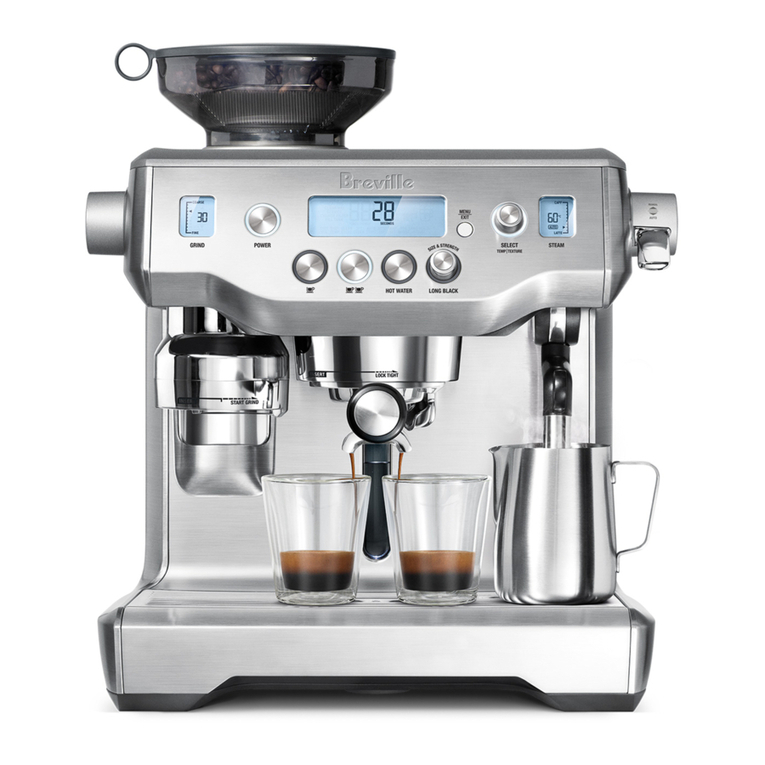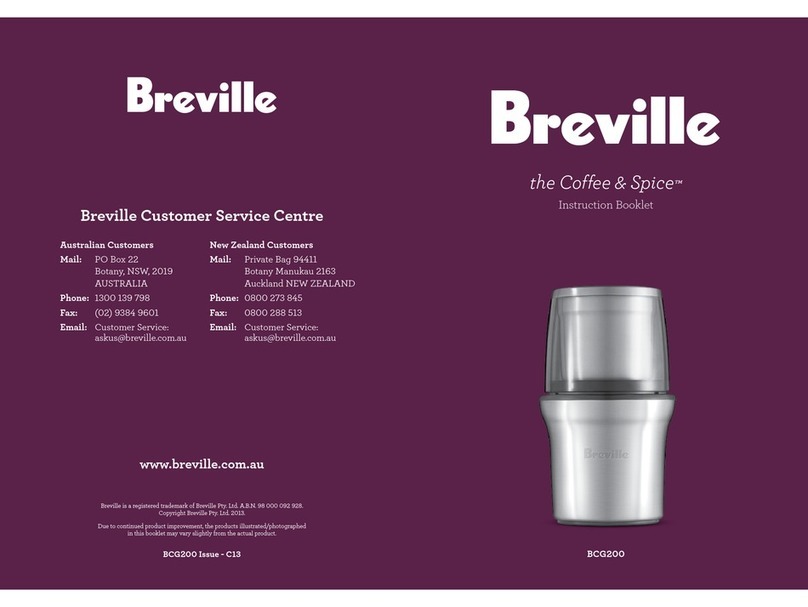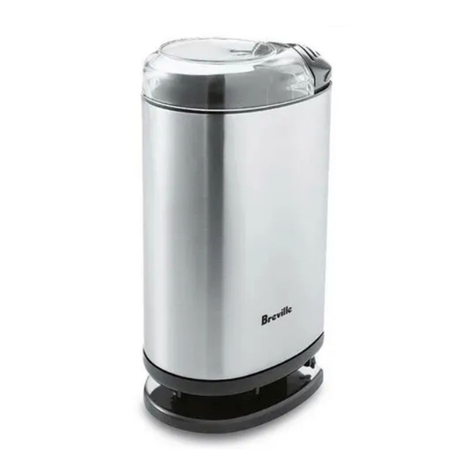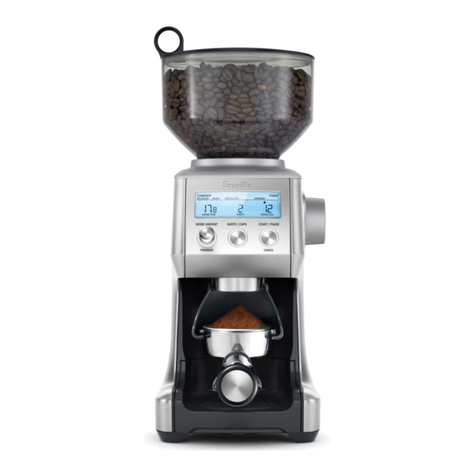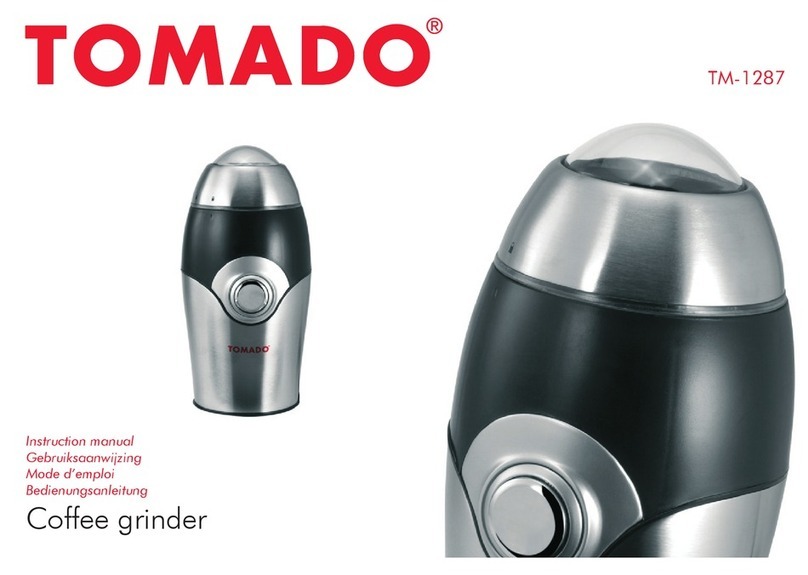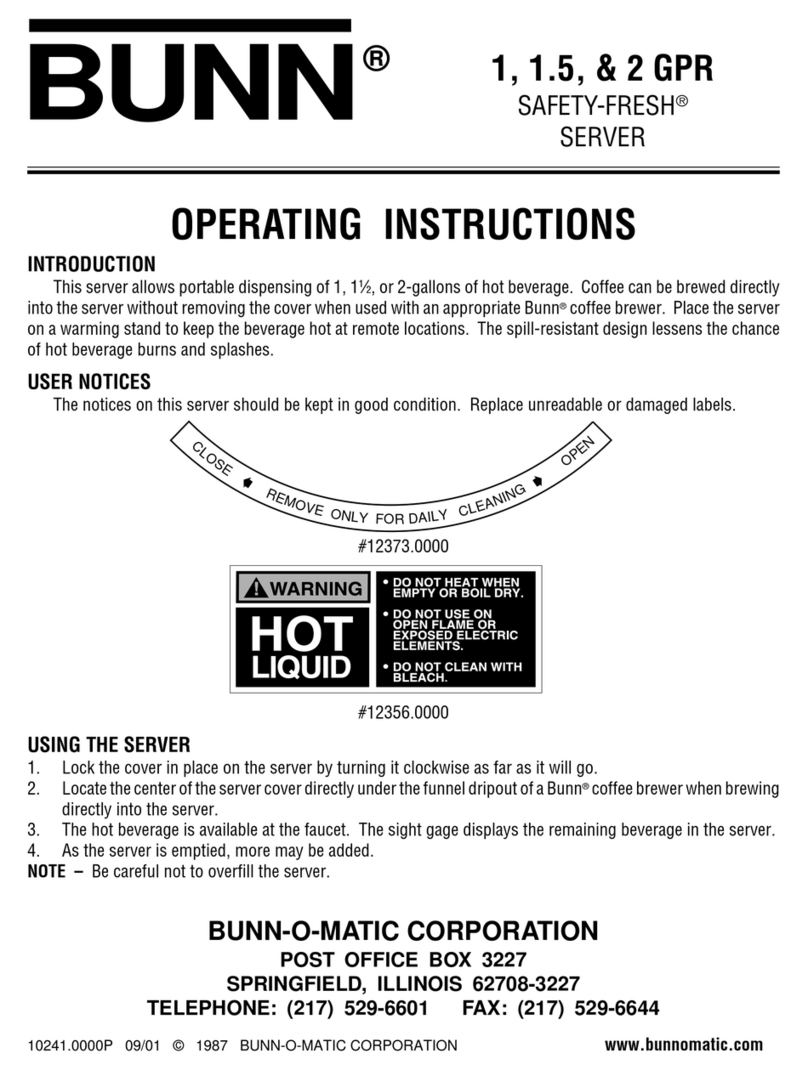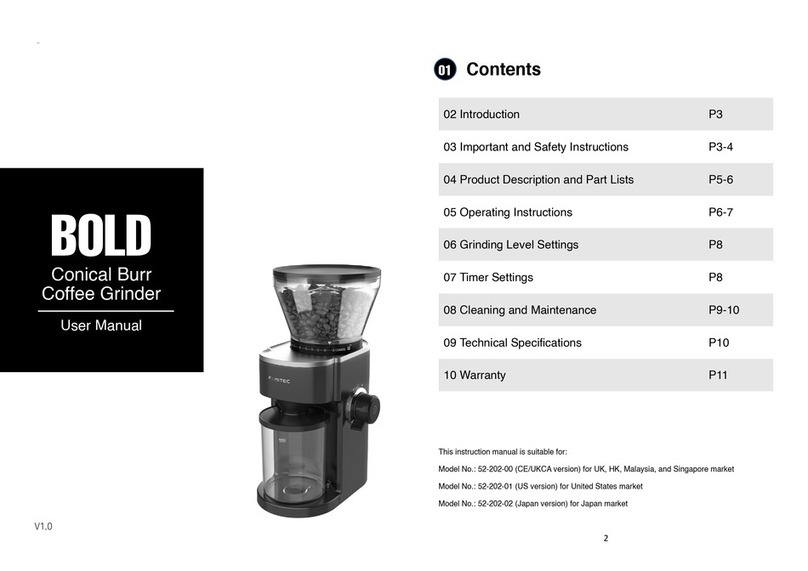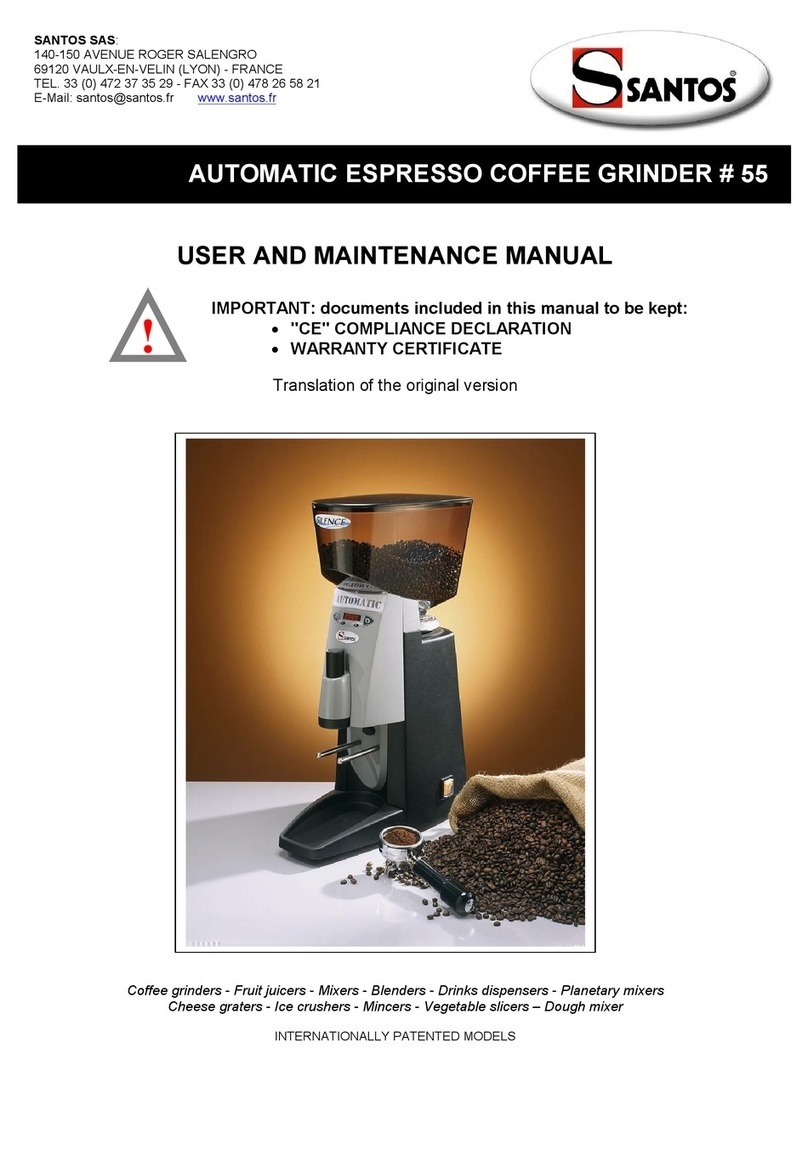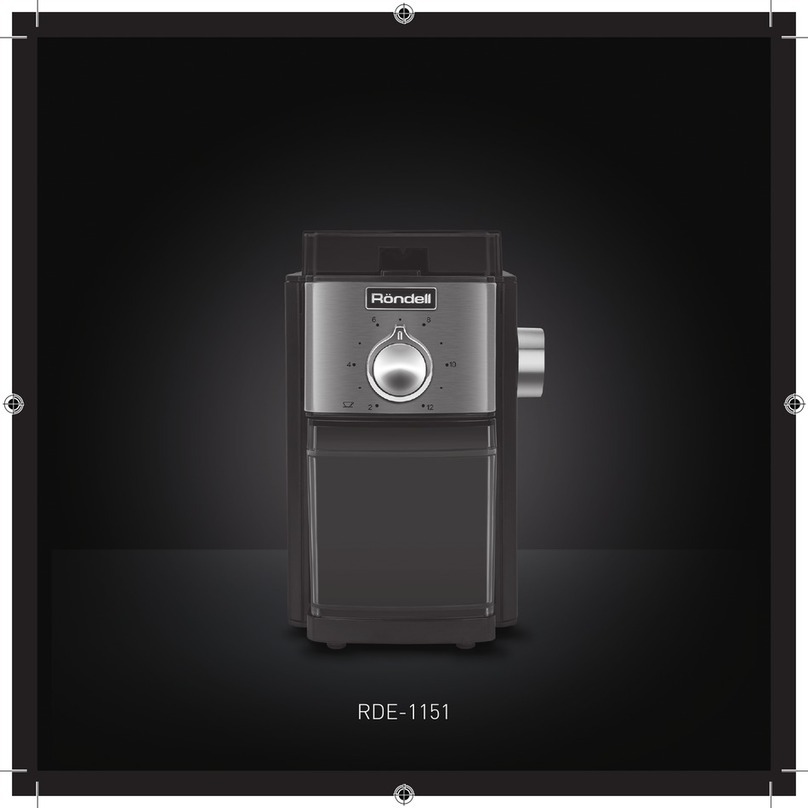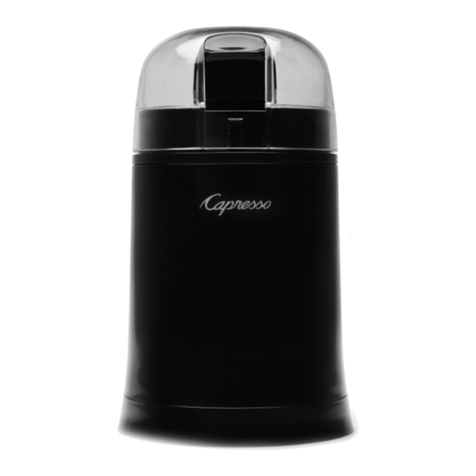
16 17
Troubleshooting
PROBLEM POSSIBLE CAUSE WHAT TO DO
Grinder does not start
after pressing START|
PAUSE|CANCEL button
• Grinder not plugged in.
• Grinder has overheated.
• Bean hopper not attached correctly.
‘PLEASE LOCK HOPPER’ will be
displayed on LCD screen.
• Plug power cord into power outlet.
• Remove power plug from power
outlet. Leave for 20 minutes to cool
down before using again.
• Lock bean hopper into position.
Motor starts but no
ground coffee coming
from grind outlet
• Incorrect button pressed.
• No coffee beans in bean hopper.
• Grinder/bean hopper is blocked.
• Press START|PAUSE|CANCEL
or PORTAFILTER SWITCH to
activate.
• Fill bean hopper with fresh coffee
beans.
• Remove bean hopper. Inspect bean
hopper and burrs for blockage.
Replace parts and try again.
Motor starts but
operates with a loud
‘racket’ noise
• Grinder is blocked with foreign item
or chute is blocked.
• Moisture clogging grinder.
• Remove bean hopper, inspect burrs
and remove any foreign body.
• Clean burrs and chute (refer to
Care & Cleaning on page 15).
• Leave burrs to dry thoroughly
before re-assembling. You can use
a hair dryer to blow air into grinder
inlet (lower burr) to dry.
Unable to lock bean
hopper into position • Coffee beans obstructing bean
hopper locking device. • Remove bean hopper. Clear coffee
beans from top of burrs. Re-lock
hopper into position & try again.
Not enough/too
much coffee grind • Grind amount requires adjustment. • Press SHOTS|CUPS button to
change grind amount.
• Use Grind Amount Dial to fine tune
the amount ‘more’ or ‘less’.
Portafilter overfills • It is normal for the correct amount
of coffee to appear overfilled in
your portafilter. Untamped coffee
has approximately three times the
volume of tamped coffee.
Emergency stop? • Press START|PAUSE|CANCEL
button to stop operation.
• Unplug power cord from power
outlet.
FRENCH PRESS
Follow these easy steps for a great cup:
1. Using a variable temperature kettle, heat
the appropriate volume of water to 200˚F.
This is an ideal temperature for brewing
coffee. Do not use boiling water.
2. Select grind size setting 58.
3. Select the number of cups you are
brewing. Adjust the amount of coffee
to suit the strength you prefer.
4. Place the ground coffee in the plunger vessel.
5. Pour the heated water into the plunger in
a swirling manner to ensure all the ground
coffee is soaked and the plunger vessel is
full. The ‘bloom’ (expanding coffee and
gases) should reach the top of the plunger.
6. Using a timer, wait 4 minutes.
7. Using a spoon, break the ‘crust’ (the bloom
becomes dense and a bit hard).
8. Insert the plunger and carefully press down.
9. Do not press too hard. Gently release
pressure by pulling up slightly and press
down again if you have pressed too hard.
MAKING BETTER QUALITY COFFEE
• Freshly ground coffee is the key to making
coffee with more flavor and body.
• Coffee flavor and strength is a personal
preference. Vary the type of coffee beans,
amount of coffee and fineness of grind to
achieve the flavor you prefer.
• Use freshly roasted coffee beans with a
‘roasted on’ date to maximize flavor, not a
use-by or best before date.
• Use coffee beans between 5 and 20 days after
the ‘roasted on’ date for optimal freshness.
• Store coffee beans in a dark, cool and dry
place. Vacuum seal if possible.
• Buy in small batches to reduce the storage
time.
• Once coffee is ground, it quickly loses its
flavor and aroma. For the best results, grind
beans immediately before brewing.
• Do not store beans in the bean hopper.
Place them back in an airtight container.
• When storing the appliance, run grinder
empty to clear ground beans left in chamber.
• Run grinder for 2 seconds to purge some
coffee before each use, for maximum
freshness.
• Clean the bean hopper and conical burrs
regularly.

















